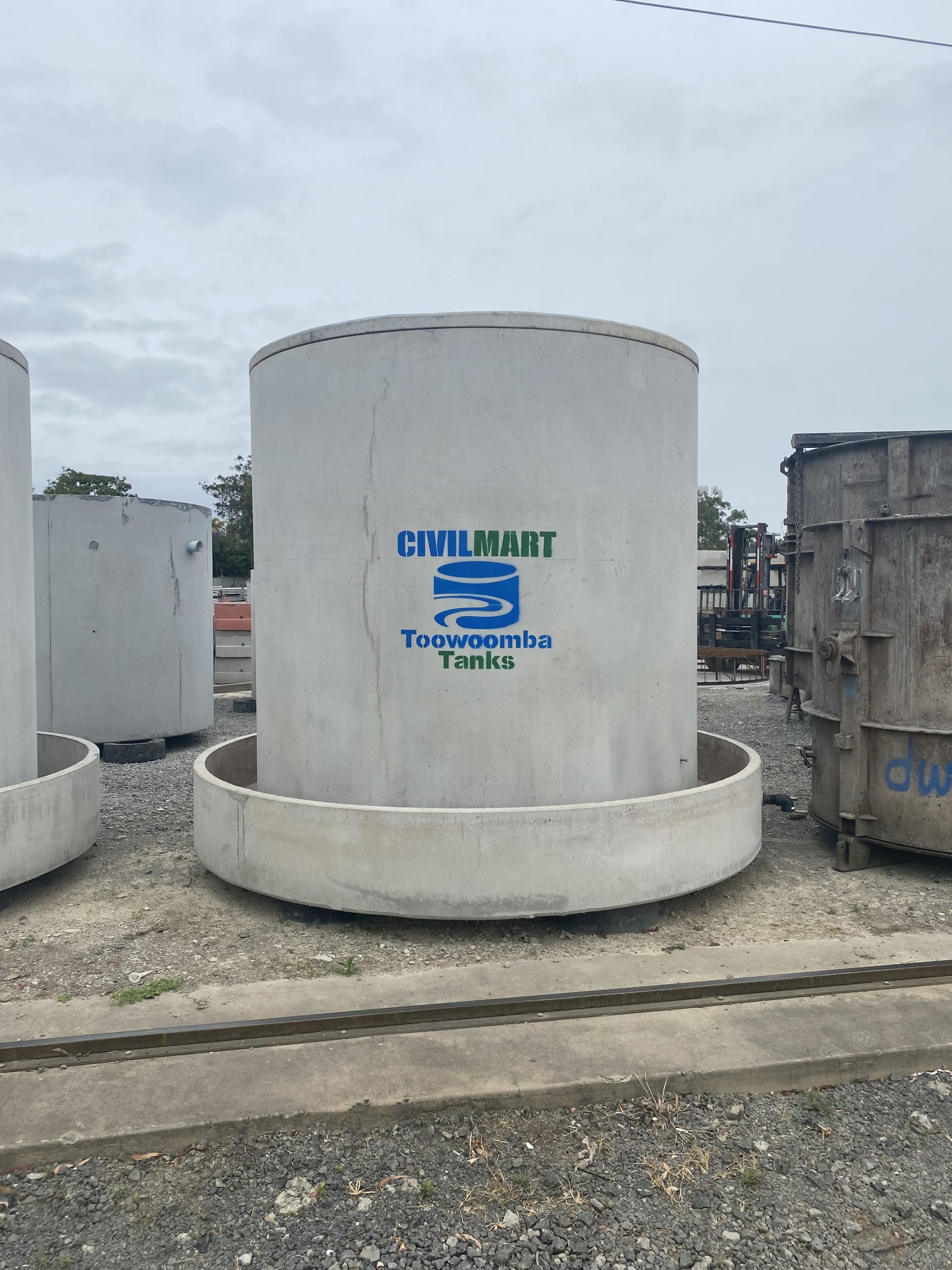It’s important because water sets our planet apart in this solar system. It’s what makes life on Earth possible. In the coming years, the practise of rainwater harvesting could be essential as it presents an environmentally friendly method of reducing our water consumption. Our ‘earthly’ supply of usable water is finite and, like other finite resources, it’s running out. Water that falls from the sky, on the other hand, is renewable, and collecting it is imperative. In this post, we take a closer look at the question of why is rainwater harvesting important… How does it benefit the environment, and us? What’s involved, and how does rainwater harvesting work?
What Is Rainwater Harvesting?
Rainwater harvesting is the collection, transport, and storage of rainwater to use instead of, or supplement, existing water resources.
In Australia, around 5 million rural and urban households currently collect and use rainwater for various purposes, including drinking. For many remote communities and rural areas, rainwater harvesting provides the only viable water source for domestic use.
For homeowners, rainwater harvesting starts with collecting rainwater runoff from your rooftop. Commercial rainwater harvesting systems also collect runoff from rooftops but sometimes collect it from other hard surfaces such as pavements and roads as well.
Once collected, the water is transferred to either above or below-ground water tanks and stored for future use. At various points along its route, most collected rainwater is run through filtration systems to remove debris and eliminate contaminants.
Uses of Rainwater Tanks and Storage
Rainwater collection systems and storage tanks are important resources with many uses. In particular, they are valuable in situations where using mains water is a waste of a finite, precious, and expensive, resource!
Apart from the well-known uses – reticulation, ablution facilities, and car washing – collected rainwater is useful for cooling i.e. evaporative air-conditioning, and fire-protection systems.
Many industrial, manufacturing, agricultural, and horticultural processes likewise depend on a reliable water source. Collected rainwater is an ideal and sustainable way to provide it, particularly as the planet gets drier and hotter. At the same time, these systems reduce reliance on valuable groundwater and municipal supplies.
Collecting rain and storm water runoff can also help mitigate erosion and flooding, and serve as a way of diverting contaminated water for treatment before releasing it back into the environment.
Commercial Uses For Rainwater Tanks And Rainwater Harvesting
In commercial settings, collecting rainwater is a reliable and eco-friendly way for businesses and industries to reduce their overheads and their reliance on groundwater and municipal supplies. Water collected in these systems is typically stored in large tanks, often underground. Our range of concrete tanks is perfect for these applications. The water can then be used to supply:
- Commercial premises such as office blocks and shopping centres
- Industrial processes – mining, metal finishing, steam generation
- Horticulture – small and large-scale irrigation
- Agriculture – livestock watering, crop spraying
- Manufacturing – textiles, paper, plastics, chemicals
- Emergency services – fire fighting and fire protection systems
- Recreational and community use
Residential Uses For Rainwater Tanks And Rainwater Harvesting
Why is rainwater harvesting important for residential use?
In residential situations, collecting rainwater means you can use it instead of precious mains water in your garden, laundry, bathroom, and toilet. If it’s potable quality, it’s also suitable for cooking and drinking. However, this does come with caveats – notably you need to ensure you have a good filtration system to purify it.
Apart from reducing your reliance, and the load, on municipal water supplies, you’ll save on your water bills as well as do your bit to help offset carbon emissions. As an added advantage, rainwater is much softer, and a whole lot better tasting, than a lot of mains water!
What type of tank should you install?
A good quality one…! It goes without saying that concrete tanks like our Highland Tanks and Toowoomba Tanks have a range of advantages over poly and steel ones. They’re:
- More durable so last a long time,
- Stronger so can be safely installed underground without having to worry about overhead weight, corrosion and so on,
- Recyclable – concrete tanks can be crushed down at the end of their life and the rubble and concrete reused for a range of purposes,
Concrete can also neutralise pH levels in water.
How Do Rainwater Harvesting Systems Work?
A rainwater harvesting system – domestic or commercial – generally consists of:
- A hard surface for collecting the rainwater runoff, usually a rooftop
- A collection point i.e. gutters and downpipes
- A pre-tank filter system i.e. leaf-shedding rain-heads, and first-flush diverter
- A conveyance system (pipes) to transport the water from the collection point to a tank
- A tank
- A pump (submersible or external) to pump water from the tank to its use points, unless the system is a gravity-fed one
- A post-tank filtration system that further removes any contaminants in the water (important if you’re going to be using the water for drinking or cooking)
- Piping to connect it to your existing plumbing
How Does Rainwater Harvesting Work?
In a typical domestic rainwater harvesting system, rainwater runs off the collection surface (your roof) and enters the collection point (gutters and downpipes). The downpipes connect to your tank, usually with water-grade PVC pipe. You should also have leaf guards on your gutters and/or leaf-shedding rain-heads installed in all the downpipes that feed into your tank.
First-flush diverters are also a necessity, especially if you’re going to be using the water for cooking and drinking. They protect your tank from contaminants and debris that accumulate on your roof and get through the rain heads and/or gutter guards (dust, dissolved bird droppings etc). In some jurisdictions, diverters are mandatory.
However, there are other types of rainwater harvesting systems to consider, depending on what your end requirements are. Storm water drainage systems for example are becoming a necessity as storm and flooding events increase in Australia. Installing these systems allows damaging water flows to be diverted into tanks, or natural drainage systems.
Some of the more common types of storm water drainage systems are:
- Surface Storm Water Drainage,
- Side Entry Pits,
- Subsurface Drainage,
- Gross Pollutant Traps,
- Open Storm Drains,
- Spoon Drains, and
- Slope Drainage
How is Harvesting Rainwater Sustainable?
Harvesting rainwater is sustainable because it harvests a renewable resource and reduces your reliance on a finite one.
Why is rainwater harvesting important for sustainability?
It’s important because just 0.0001% of the earth’s water is readily available [1]. The rest is too salty, too far underground, or too frozen. When you install a rainwater harvesting system you are:
- Helping conserve that 0.0001% of water we can easily access
- Helping reduce carbon emissions by reducing demand for an energy-intensive product
- Helping conserve community water supplies
- Helping mitigate flooding and erosion by reducing stormwater flows into erosion-prone landscapes and structures
Harvesting rainwater though isn’t the only way you can conserve water! You can also recycle your waste water and reuse it for a range of purposes such as watering the garden, and cleaning. It does require a special type of recycling system though, like our TurboJet Single. This unique, advanced, and highly effective system turns what would otherwise be a bulky set up of individual tanks, into a compact unit consisting of 5 settling and treatment chambers housed in a single ‘normal-looking’ tank.
Is Rainwater Harvesting Worth it?
Australian households are our biggest water consumers by far. Each one spends over $1,000 a year, on average, on water bills. Most of that spend is on water used for purposes that perfectly suit harvested rainwater! For example, the average Australian household:
- Showers ~17-20% of it down the drain
- Flushes ~13% of it down the toilet
- Turns ~12% of it into grey water via their washing machine, AND
- Puts ~50% of it on their garden, car, driveway, or pet dog
Why Is Rainwater Harvesting Important From A Cost-Savings Perspective?
When you add up the %s above, you can see that less than 10% of the average household’s domestic water is used in the kitchen! Therefore – by installing a rainwater harvesting system you could chop around 90% off your water use bill. You could make it 100% if your rainwater is also potable. Unfortunately, we can’t do much about water supply charges…
Purchase and installation costs are your main expenses with a rainwater harvesting system. The tank is the biggest component of this and will determine the overall cost of your system. However, once installed – the long-term benefits are well worth the investment!
Why Choose Civilmart for Your Rainwater Harvesting Systems?
Designed and manufactured to the highest standards and backed by our combined experience of over 700 years, Civilmart’s quality concrete tanks are the perfect reliable and durable solution for your rainwater harvesting! With outlets across Australia, it’s never been easier to make the switch to a more sustainable, cost-effective, and environmentally friendly water supply. Contact us today and together we can make a real difference!
Join the Civilmart family
Stay up to date with latest product releases, newest industry innovations and more!


